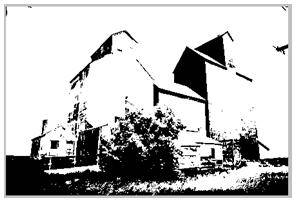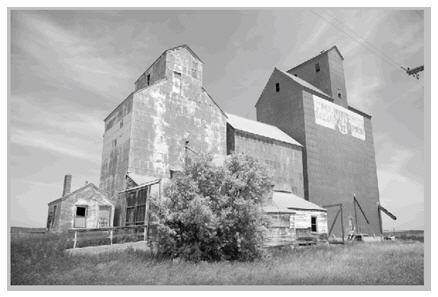How Many Values Can A 14 Bit Register Hold

Empowering photographers since 2006
Laura Shoe'southward Lightroom Web log
eight bit, 12 bit, 14 flake, 16 chip — What Does It Actually Mean to Digital Photographers?
 You lot may be photographing in raw rather than jpeg because y'all know that raw files contain more information and because they are unprocessed, giving you more than flexibility. Merely how do they incorporate more information? Amongst other things, digital photography raw files are captured at a higher bit depth — depending on the camera, 12, xiv or 16 bit, compared to 8 bit for jpegs. Whether 12, fourteen or 16, these higher bit-depth files potentially comprise much more than information than 8 chip files.
You lot may be photographing in raw rather than jpeg because y'all know that raw files contain more information and because they are unprocessed, giving you more than flexibility. Merely how do they incorporate more information? Amongst other things, digital photography raw files are captured at a higher bit depth — depending on the camera, 12, xiv or 16 bit, compared to 8 bit for jpegs. Whether 12, fourteen or 16, these higher bit-depth files potentially comprise much more than information than 8 chip files.
So what is bit depth?
For each pixel in your image, the tonal value or brightness of the scene you are photographing is stored in the prototype file on your memory card, along with the color. Calculator files store information in zeros and ones. Bit depth refers to how many digits the tonal data for each pixel is stored in. Imagine if your camera used a chip-depth of one: you would have i digit to store how dark each piece of the scene was, the merely possible values would be 0 and 1, and the only two tones that could exist represented are black and white:

Image From File with Bit Depth of One
This paradigm of class has very piddling detail, since it contains no shades of gray.
If the file had a fleck depth of two, there would be 2 digits, and the four values of 00, 01, ten, and eleven would be possible, and so the paradigm could have black, nighttime gray, lite gray, and white:

Prototype from File with Bit Depth of 2
Find that we have gained some detail, but that the paradigm is still very choppy. In the histogram for this epitome, beneath, we meet huge gaps between the tones, confirming the choppiness or posterization. (The histogram is a graph of the tones in an image, going from pure blackness on the left side to pure white on the right side.)

Histogram for File with Chip Depth of 2
Let'southward bound to a file with a bit depth of 5, which allows ii to the fifth, or 32 possible values from 00000 to 11111:

Image from File with Bit Depth of five
We gain alot of item, but there is still obvious posterization in the sky (click on the image to see it larger). The histogram supports this:

Histogram for Image with Bit Depth of v
Now let'southward jump to 8, which allows 2 to the eighth, or 256 values, and is what a jpeg supports:

Image with Bit Depth of 8

Histogram of Image with Bit Depth of 8
This prototype shows the full particular of the scene with no visible posterization, even when viewed at total size, and the histogram looks much better. (If you meet whatsoever posterization, information technology is not real, but rather just the upshot of my web log relieve process.) And then why not stop here, with 8 bits and 256 tones?
The trouble is that every bit before long as you lot start enhancing your paradigm, you first compressing and expanding the tonal range. This creates choppiness in the histogram and potentially, visible posterization in your image. To show this, I took this viii flake image into Photoshop, and added dissimilarity and darkened it:

Darkened and Added Contrast to eight Bit Epitome
Notice how this pulled apart the histogram:

Result of Working 8 Bit Image
The more than heavy-handed your adjustments, the more and wider gaps yous volition terminate up with in your histogram, and the greater possibility that you lot will see posterization in your image. 256 tones is often non enough for the fine detail in the epitome to concord together.
12 fleck files have over 4,000 tones, and 14 fleck files have over 16,000. This is vastly better, and with nearly any work you could do to an image, information technology would hold together. Here is the histogram from the 12 fleck version of the above image, with the darkening and increased contrast:

Histogram from 12 Flake Version with Darkening and Contrast Boost
To have this additional "editing headroom", you take to capture a high chip-depth image, i.eastward. a raw file, and you have to raise information technology equally a loftier-bit depth file. It does no good to convert a raw file into 8 bit as you motion into Photoshop to piece of work it. While you are working in Lightroom or Camera Raw, your work on your raw file is in xvi bit (standardized to accomodate 12, 14 and sixteen). When you lot move a file from Lightroom or ACR to Photoshop, you demand to ensure that the Photoshop file stays in 16 flake. In Lightroom, go to Edit or Lightroom>Preferences>External Editing, and fix your PSD or TIFF preference to 16 bit. In ACR, click on the workflow options at the bottom of the screen and do the same.
College scrap depth files likewise potentially have a much larger number of colors: an 8-bit jpeg tin represent around 16 million colors, whereas a high bit-depth file can represent over 28 billion. sixteen million may seem like enough, but again, with heavy editing, you can see colour banding or blotchiness in your photo. Your high-bit-depth photo with billions of potential colors will concur up much better.
The downside to higher chip-depth is larger image files — all else equal, a 16 bit image file is twice equally big every bit an eight bit image file. But big retentiveness cards and hard drives are and then much cheaper these days than they used to be.
Annotation: I take printed these histograms from Photoshop. Lightroom smooths out the histogram, so you lot won't see these gaps — nevertheless, the quality issue bug still exist.
[sc:signup]How Many Values Can A 14 Bit Register Hold,
Source: https://laurashoe.com/2011/08/09/8-versus-16-bit-what-does-it-really-mean/
Posted by: bennerdereettris.blogspot.com


0 Response to "How Many Values Can A 14 Bit Register Hold"
Post a Comment